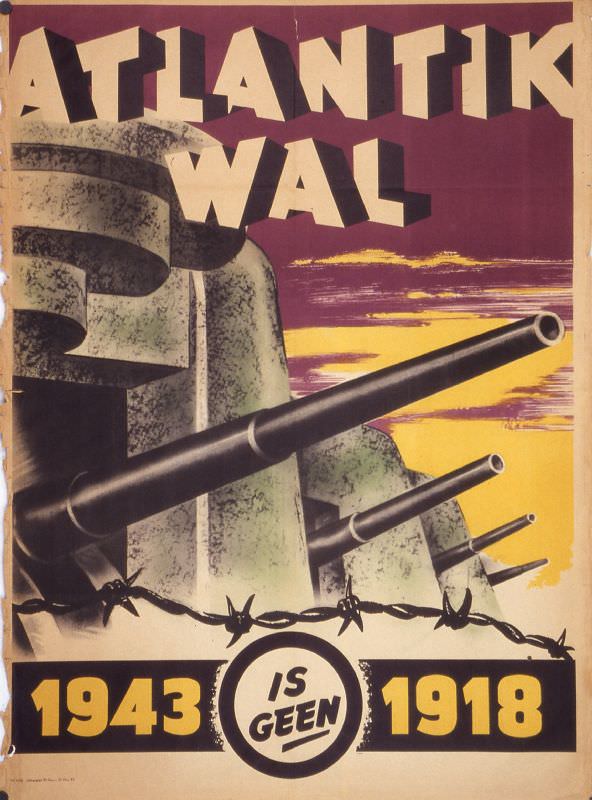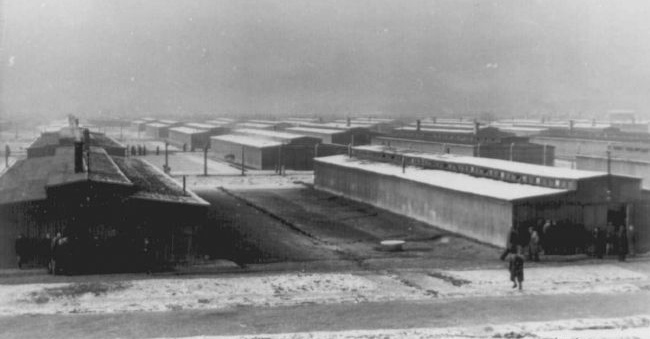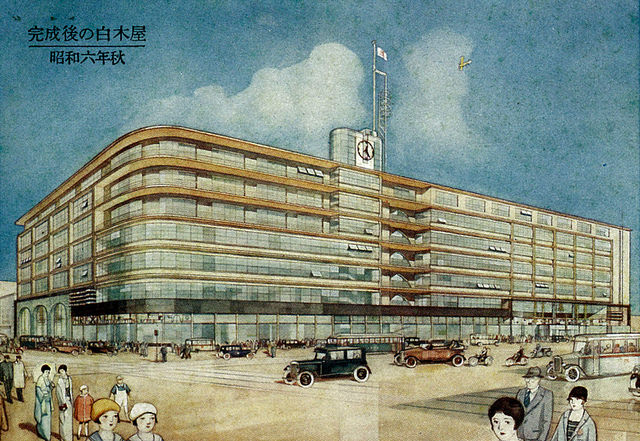There has long been a tendency to see the most important innovations of Modernism as arising directly from progressive causes. War, in this view, was considered a limiting if not wholly destructive force that stymied civilian architecture in favor of retrogressive military structures. But in his groundbreaking recent book Architecture in Uniform: Designing and Building for the Second World War, the French architectural historian and architect Jean-Louis Cohen establishes one big, awful, inescapable truth: the full potential of twentieth-century architecture, engineering, and design was realized not in the social-welfare and urban-improvement schemes beloved by the early proponents of the Modern Movement, but rather through technologies perfected during the two world wars to slaughter vast armies, destroy entire cities, decimate noncombatant populations, and industrialize genocide.
It is hard to come away from Architecture in Uniform without the same feelings of profound horror and lingering dread that overtake readers of recent books on World War II by Max Hastings, Timothy Snyder, and other historians who continue to reveal with terrifying immediacy just how horrific that catastrophe was. And yet it also had paradoxical consequences for architecture.
High among the major misconceptions that Cohen addresses in this heroic project—which included an eponymous exhibition he curated at Montreal’s Canadian Centre for Architecture last summer—is that World War II brought the building art to a veritable halt. Although non-essential commercial and residential construction were indeed banned for the duration of the war in the US, architecture and engineering proceeded apace in the military sphere. Urgent contingencies spurred the rapid development of new synthetic materials (especially plastics of all sorts) and imaginative technical solutions (including lightweight and portable structures as well as new forms of prefabrication) that would have taken far longer to emerge under less pressured peacetime conditions.
Now a professor at NYU’s Institute of Fine Arts and the University of Paris VIII, Cohen was himself touched by the immediate legacy of the war in the French capital where he grew up. Although he recounts such inspiring feats as the wholesale retooling of American manufacturing for the all-out war effort—which spelled certain doom for the Axis once our industrially invincible country entered the conflict in 1941—darker episodes predominate. Impelled by the saga of his mother (the wife of a leading French Communist Party official), who was a slave laborer in the greenhouses appended to the Dachau concentration camp, Cohen recounts how design concepts devised for human betterment were most effectively reapplied by the Nazis to the vilest ends:
It was a kind of sadistic radicalization of the research on the minimum habitation that had been conducted under the Weimar Republic by architects in Berlin and Frankfurt, whose purpose was the large-scale production of affordable modern housing for large urban populations. The concentration camp version of the Existenzminimum was compressed beyond any imaginable limits.
As Cohen notes, one of the principal designers of the Auschwitz death factory, Fritz Ertl, was trained at the Bauhaus, the German design school we now associate with the most enlightened aspects of the new architecture. Ertl’s partner in crime at Auschwitz was the all-too-aptly named architect August Schlachter (slaughterer). Their thoroughly depraved SS boss, Hans Kammler, was an architect who had worked under the socially aware Berlin housing architect Paul Mebes during the Weimar period. Even though Hitler’s personal hatred for the supposedly un-Germanic International Style led his acolytes to reject its outward manifestations in favor of traditional Völkisch motifs (especially the pitched roof), they were all too willing to retain the internal functional improvements of Modernism and apply them wholeheartedly to the Nazi killing machine.
The author reserves special contempt for the much written-about overseer of these fiends, Albert Speer, whose talents as an architect and war-materiel strategist were far outstripped by a genius for lying and charm that saved his neck at Nuremberg. How this monster ever survived postwar justice to rewrite his own twisted version of history remains a great mystery, but Cohen will have none of it. As he concludes his terse but devastating section on the death camps:
Speer attempted to justify his actions by claiming that his “obsessive fixation on production and output statistics” had “blurred all considerations and feelings of humanity.” But in the case of the architects of the Bauleitung of Auschwitz [Ertl and Schlachter], who could not be unaware of the horror at work some meters away from their drawing board, this pale excuse cannot even be contemplated.
Unpleasant as it is to contemplate, the symbiosis between war and architectural advancement was hardly exclusive to World War II. Going back to antiquity—and particularly with the onset of the Industrial Revolution—large-scale conflicts caused new means of production to be redirected toward military ends, which in turn inevitably affected manufacturing technology in peacetime. But it was World War I that changed everything. As Cohen writes in a second recent book, his new history of modernism, The Future of Architecture: Since 1889: “Instead of disrupting the pattern of transformation in which architecture was engaged worldwide, the first industrial war in history had the opposite effect: by accelerating modernization….”
Advertisement
The Future of Architecture is the best comprehensive history of modernism to appear in a generation. While not departing from an essentially familiar narrative, Cohen extends his sights well beyond the usual parameters of the modernist canon. Thus, in addition to such ever-fixéd landmarks as Walter Gropius’s Bauhaus, Ludwig Mies van der Rohe’s Barcelona Pavilion, and Frank Lloyd Wright’s Fallingwater, we find less heralded but recently reappreciated masterworks such as Grete Schütte-Lihotzky’s ingeniously integrated Frankfurt Kitchen, Adalberto Libera’s majestically isolated Villa Malaparte on Capri, and Dimitris Pikonis’s monumental but understated pedestrian promenade on the Athenian Acropolis. And in no other survey are you likely to find off-the-beaten-path urban showpieces of the 1930s such as Kikuji Ishimoto and Bunzo Yamaguchi’s Shirokiya Department Store in Tokyo, Horia Crenga’s Asigurarea Romaneasca Building in Bucharest, and Antoine Tabet and Georges Bordes’ Hôtel Saint-Georges in Beirut.
Cohen’s text will be closely read for his critical estimation of living and deceased architects. The most significant figures are accorded several paragraphs each, but such attention does not always signal approval. For example, the author efficiently dispenses with Philip Johnson, “who followed architectural shifts more than he generated them….[and] cast a long shadow over the American profession as well as its cultural institutions.” (He makes even shorter work of Johnson’s creature and epigone Robert A.M. Stern.)
Among today’s senior generation, Cohen focuses, appropriately enough, on Robert Venturi (though with scant attention to Denise Scott Brown), Frank Gehry, Rem Koolhaas, Álvaro Siza, Rafael Moneo, Renzo Piano, Richard Rogers, Norman Foster, Jean Nouvel, and Jacques Herzog and Pierre de Meuron. Accorded less space and grouped in collective subsections are such perennial press favorites as Richard Meier, Santiago Calatrava, Zaha Hadid, Daniel Libeskind, and Steven Holl, diminished allocations that I wholeheartedly subscribe to as well.
Cohen’s emphases seem merited in each instance, save one’s reservations about the ubiquitous but increasingly corporate Piano, Rogers, and Foster. What Cohen writes of Foster’s firm might be said of all three high-tech wizards: “The global success of Foster + Partners, which developed into a truly multinational firm in the 1990s, has led to high-quality projects, yet the conceptual power of Foster’s early buildings seems sometimes to have been lost in the transition.”
The high-tech aesthetic that Foster and his vast worldwide apparat have so skillfully marketed derives in large part, of course, from the no-nonsense engineering ethos that has been perhaps the most lasting design legacy of World War II, pacified though it may be at the moment. But just as mankind remains ever capable of slipping back into barbarism despite the horrifying lessons recent history offers, so does the destructive potential of man’s technological ingenuity seem not far removed from the terrible purposes to which it was put three-quarters of a century ago.
Jean-Louis Cohen’s Architecture in Uniform: Designing and Building for the Second World War is published by the Yale Press and the Canadian Center for Architecture, where the eponymous exhibition ran last summer. Cohen’s The Future of Architecture Since 1889 is published by Phaidon.







